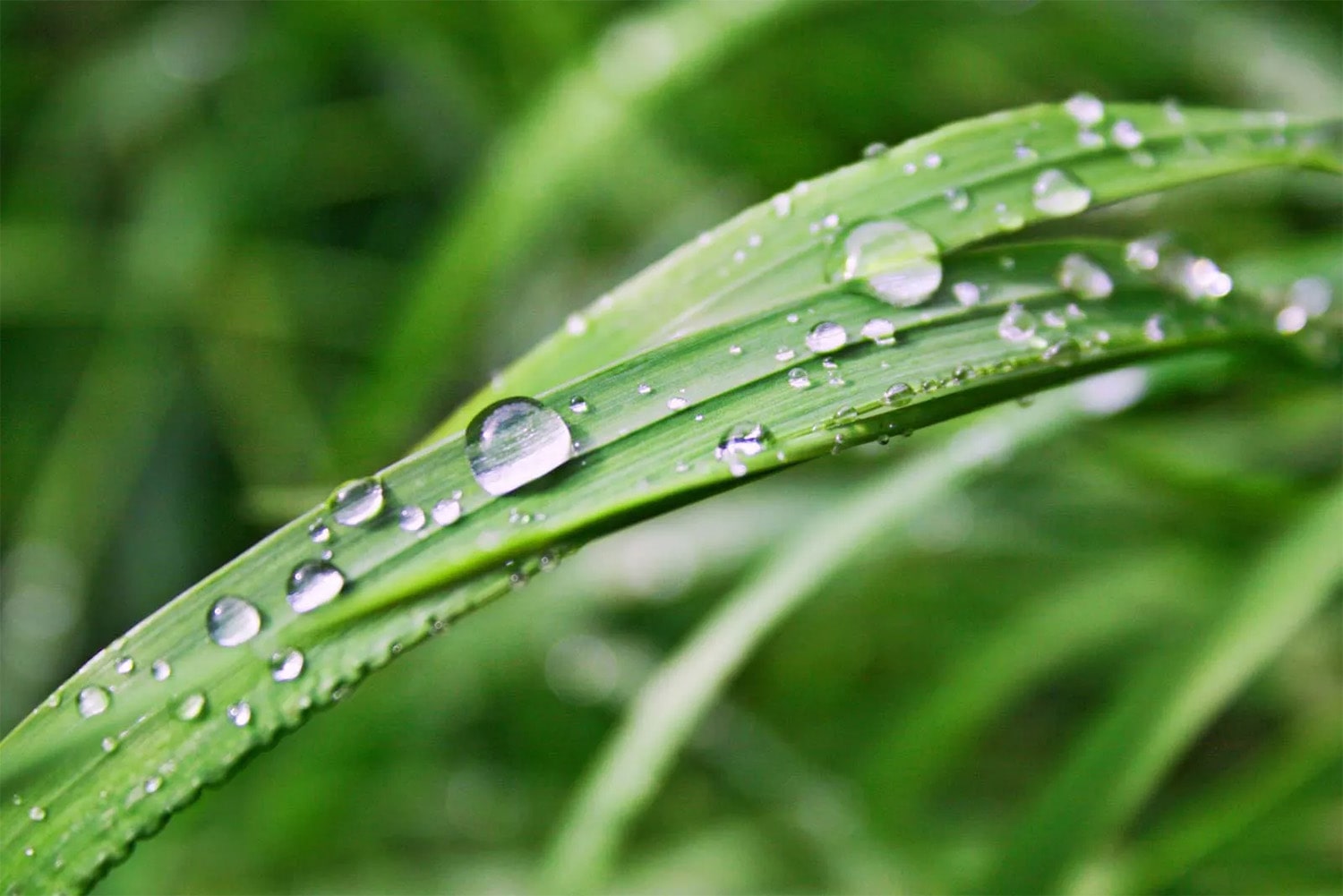
34 interesting facts about dew
- 👁️ 311
Dew is a familiar sight on early morning grass, a delicate moisture that sparkles as the sun rises. This natural phenomenon occurs when water vapor condenses into liquid form on cooler surfaces during the night. Dew is not just a sign of morning freshness but plays a crucial role in the water cycle, providing much-needed hydration to plants and small creatures in various ecosystems. It also serves as a natural indicator of climate and environmental conditions in a region. Understanding how dew forms and its impacts can provide deeper insights into our immediate natural environment. Here are thirty-four interesting and informative facts about dew.
- Dew forms through condensation when the temperature of a surface cools to below the dew point of the surrounding air.
- The dew point is the temperature at which air becomes fully saturated with moisture and can no longer hold all its water vapor.
- Dew is more likely to form on clear nights because cloud cover can insulate the earth and keep temperatures from dropping too low.
- Surfaces that cool faster, such as metal or car windshields, are more likely to collect dew.
- Dew can provide an important source of moisture for plants and animals, especially in arid environments where rainfall is scarce.
- Certain insects, such as desert beetles, have adapted to survive by collecting dew on their bodies as a source of hydration.
- Dew formation is critical for the process of seed germination in some plant species.
- In agriculture, dew is considered beneficial as it reduces water stress in plants and can help improve crop yields.
- The presence of dew can influence the local climate by cooling the air as it evaporates.
- Dew collection systems, known as dew harvesters, have been developed to provide fresh water in areas where conventional water resources are scarce.
- Historical records show that people have collected dew for drinking and religious purposes since ancient times.
- Dew is often confused with frost, which forms when the dew point is below freezing, and the water vapor sublimates directly into ice crystals.
- Measuring dew can help meteorologists predict weather patterns and morning fog conditions.
- The amount of dew that forms overnight can indicate the level of air pollution; cleaner air typically allows more dew to form.
- Dew can affect the performance of solar panels by coating their surface and reducing their efficiency until evaporated by the morning sun.
- In literature and poetry, dew often symbolizes purity and renewal.
- The angle of dew formation can affect the visibility of dewdrops on grass and leaves.
- Temperature, humidity, and wind speed are all factors that influence how much dew forms each night.
- Dew has been used in skin care products for its hydrating properties.
- Dew-covered spider webs are often more visible in the early morning light, showcasing the intricate patterns of the webs.
- Digital sensors and dew point calculators are used by farmers to anticipate dew formation and plan their irrigation schedules.
- The color and intensity of morning dew can vary depending on the mineral content of the water vapor.
- Animals such as slugs and snails are more active during dewy mornings because the moisture facilitates their movement.
- Dew can accelerate the decomposition process of organic material by maintaining moisture levels.
- The rate of dew evaporation after sunrise can help determine the soil’s moisture content and general weather conditions for the day.
- Certain fungi and molds may thrive in environments where dew is a consistent presence at night.
- Recording the frequency of dew formation can contribute to long-term climate studies and trends.
- Dew is less common in urban areas where heat islands prevent surfaces from cooling adequately overnight.
- Anti-dew coatings are applied on optical equipment like cameras and telescopes to prevent condensation that can blur images.
- Dew formation can be artificially induced in greenhouse environments to help manage plant growth and health.
- Historical dew collection practices have influenced modern techniques used in sustainable architecture and agriculture.
- The study of dew and its properties has applications in fields such as botany, meteorology, and environmental science.
- Reflective surfaces tend to condense less dew, which is why they are sometimes used in dew-sensitive areas.
- The temperature difference between the air and the ground is the primary driver of dew formation.
Dew is a small but significant part of our natural environment, affecting everything from agriculture to wildlife. Its ability to form on various surfaces under the right conditions highlights the delicate balance of temperature and humidity in our atmosphere. Dew not only beautifies our mornings but also contributes to ecological and agricultural processes that sustain various forms of life. Understanding the dynamics of dew formation can help us better appreciate and manage our natural resources, ensuring that we continue to benefit from this fascinating natural phenomenon.
Dew is a familiar sight on early morning grass, a delicate moisture that sparkles as the sun rises. This natural phenomenon occurs when water vapor condenses into liquid form on cooler surfaces during the night. Dew is not just a sign of morning freshness but plays a crucial role in…